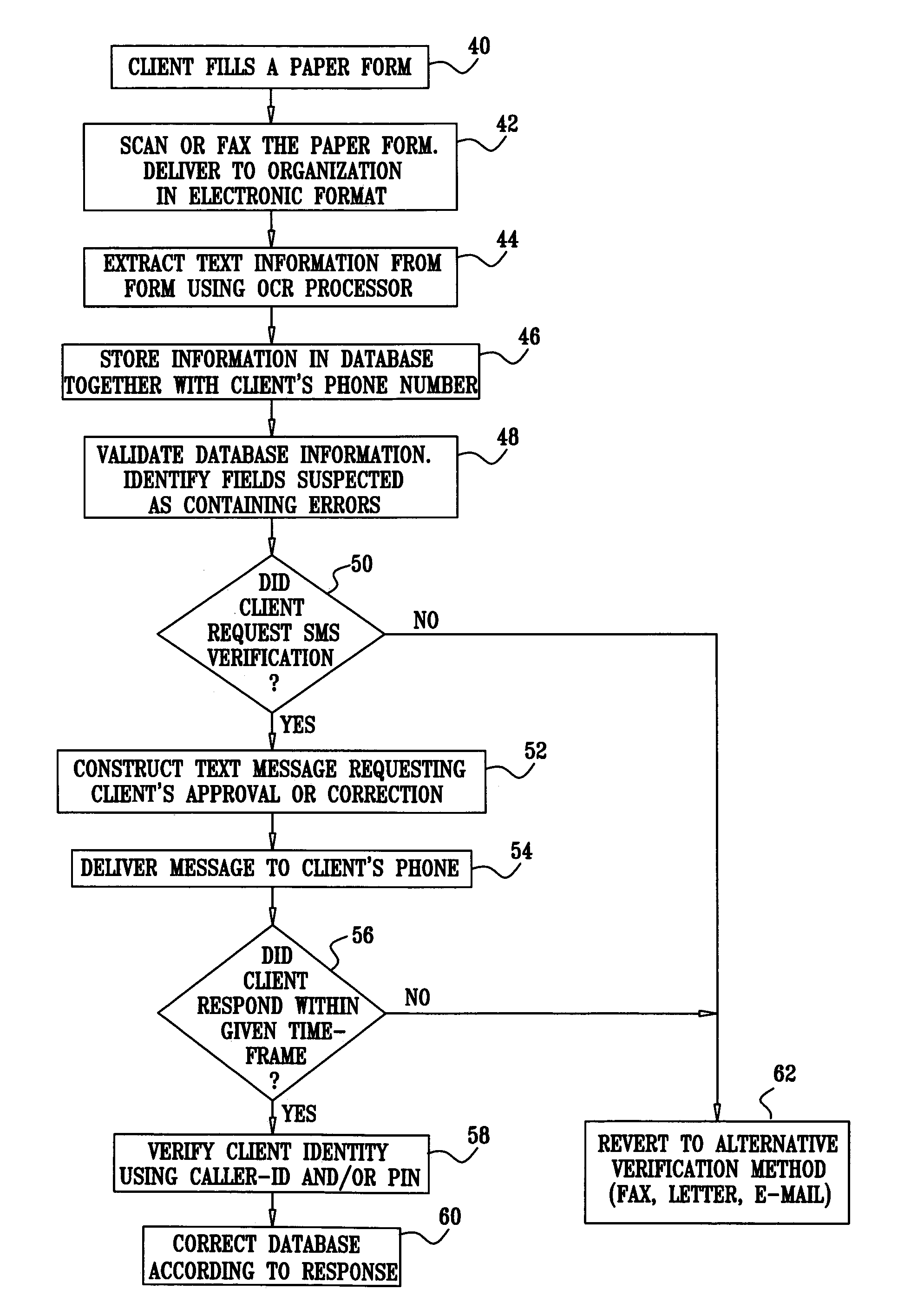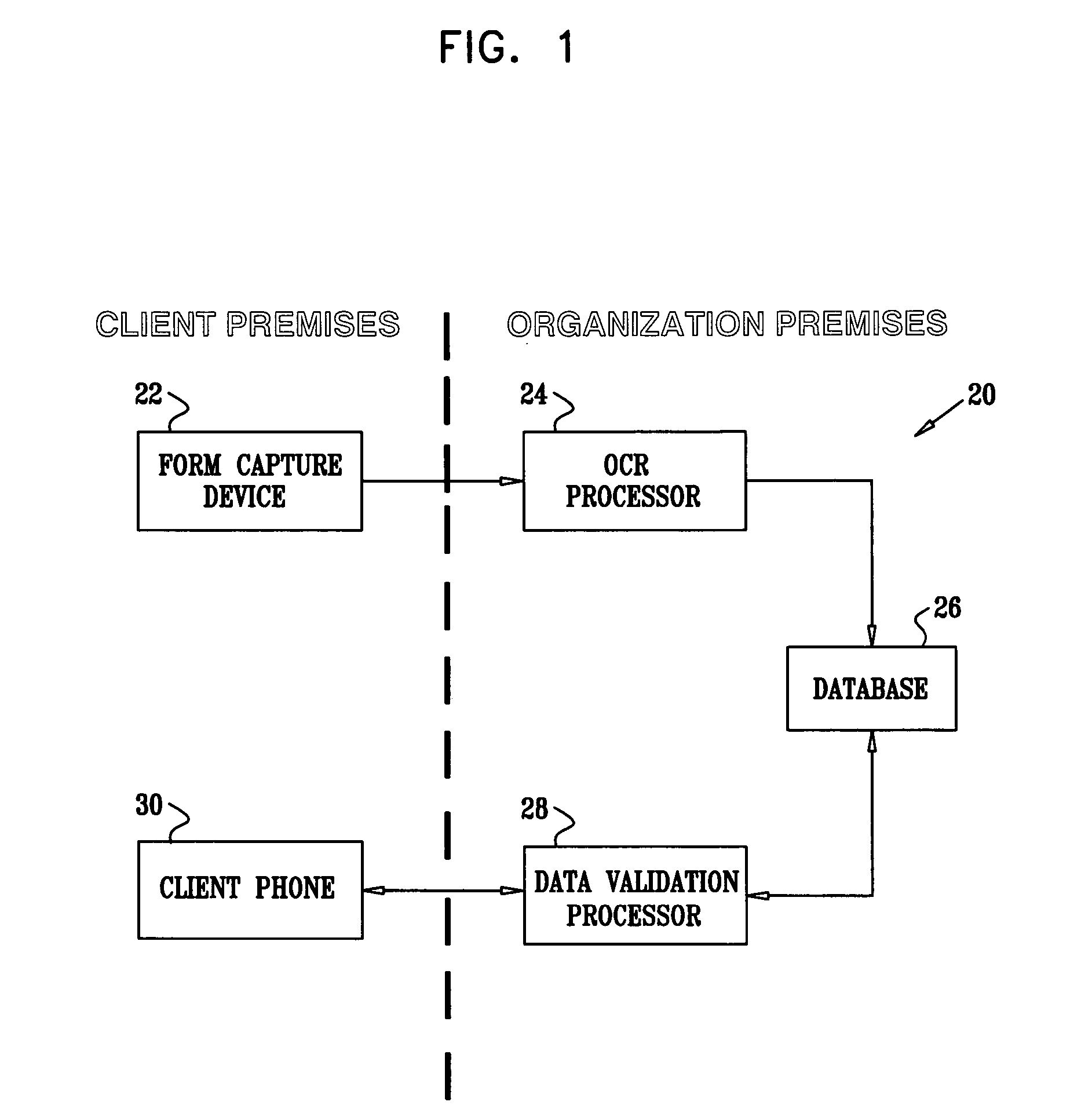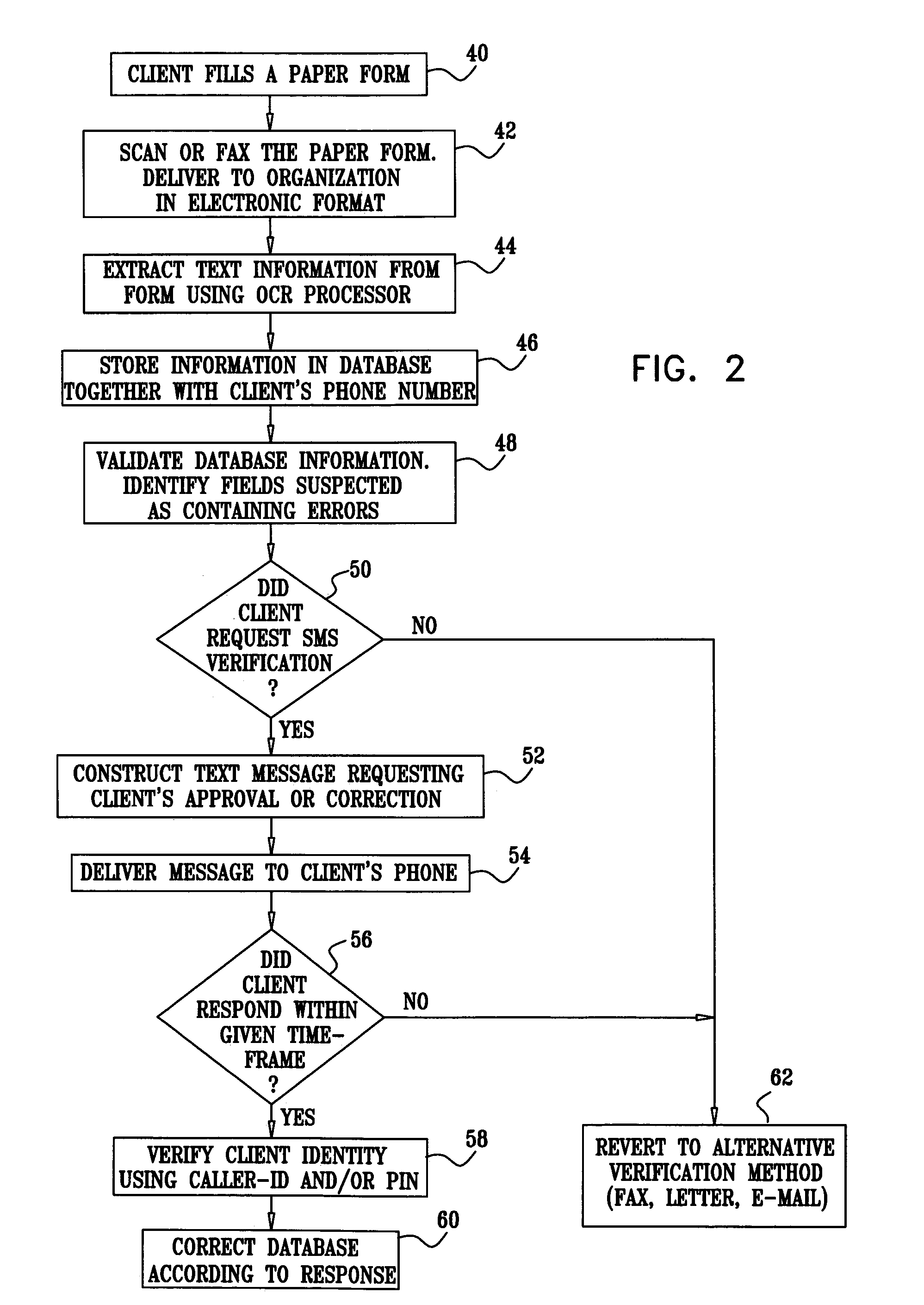Data verification using text messaging
a text message and data verification technology, applied in the field of automatic data entry processes, can solve the problems of inability to tolerate errors, finite accuracy of ocr, and certain amount of conversion errors, and achieve the effect of accurate and cost-effective methods
- Summary
- Abstract
- Description
- Claims
- Application Information
AI Technical Summary
Benefits of technology
Problems solved by technology
Method used
Image
Examples
Embodiment Construction
[0024]FIG. 1 is a schematic block diagram of apparatus 20 for data entry and verification, in accordance with an embodiment of the present invention. A paper form, in which data have been hand-written or typed, is captured and converted to electronic graphic format using a form capture device 22, typically a fax machine or document scanner. The graphical electronic version of the form is delivered over a communication line to the premises of an organization that is to receive the data, where the form is processed by an OCR processor 24. The OCR algorithm employed by OCR processor 24 recognizes the hand-written or typed text characters in the form and converts them to a coded text (typically ASCII) representation. This representation is stored in a repository, such as a database 26.
[0025]During the conversion process, the OCR algorithm identifies and marks certain information fields as “suspicious,” i.e., suspected of containing coding errors. Various methods are known in the art for...
PUM
 Login to View More
Login to View More Abstract
Description
Claims
Application Information
 Login to View More
Login to View More - R&D
- Intellectual Property
- Life Sciences
- Materials
- Tech Scout
- Unparalleled Data Quality
- Higher Quality Content
- 60% Fewer Hallucinations
Browse by: Latest US Patents, China's latest patents, Technical Efficacy Thesaurus, Application Domain, Technology Topic, Popular Technical Reports.
© 2025 PatSnap. All rights reserved.Legal|Privacy policy|Modern Slavery Act Transparency Statement|Sitemap|About US| Contact US: help@patsnap.com



